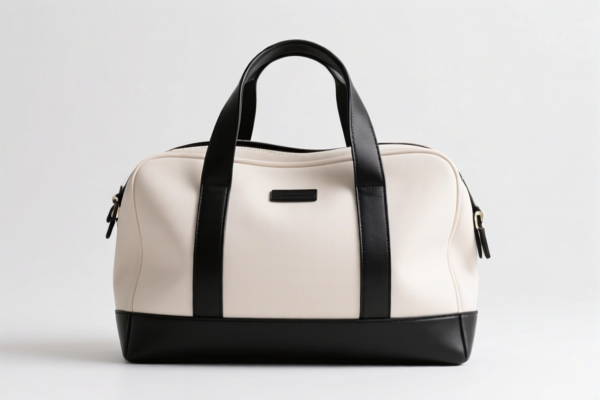| HS Code | Official Doc | Tariff Rate | Origin | Destination | Effective Date |
|---|---|---|---|---|---|
| 6305900000 | Doc | 43.7% | CN | US | 2025-05-12 |
| 6305390000 | Doc | 45.9% | CN | US | 2025-05-12 |
| 6304200020 | Doc | 43.3% | CN | US | 2025-05-12 |
| 6304200040 | Doc | 43.3% | CN | US | 2025-05-12 |
| 3923210080 | Doc | 58.0% | CN | US | 2025-05-12 |
| 3923210095 | Doc | 58.0% | CN | US | 2025-05-12 |
| 3915900090 | Doc | 55.0% | CN | US | 2025-05-12 |
| 3915100000 | Doc | 55.0% | CN | US | 2025-05-12 |




Safety Bag
A safety bag, commonly known as an airbag, is a vehicle passive safety system designed to provide occupant protection in collisions. It is a rapidly inflating cushion intended to prevent serious injury during a vehicle crash.
Material
Airbags are constructed from a nylon fabric, typically 600-denier ripstop nylon, chosen for its strength and ability to rapidly deploy and inflate. The bag itself is folded and contained within a module. The inflation is generated by a rapid chemical reaction, historically using sodium azide (NaN₃), though newer systems employ more environmentally friendly alternatives like guanidine nitrate or compressed nitrogen gas. The module housing is typically made of steel.
Purpose
The primary purpose of an airbag is to supplement the restraint provided by seatbelts, reducing the risk of head and chest injuries in a collision. They function by cushioning the occupant's impact with the vehicle's interior, slowing deceleration and distributing the force of the collision across a larger body area.
Function
Upon detection of a severe collision – typically through acceleration sensors – an electronic control unit (ECU) initiates the inflation process. An igniter triggers a chemical reaction, rapidly producing a large volume of gas (primarily nitrogen). This gas fills the nylon bag, expanding it outwards between the occupant and the vehicle's hard surfaces (steering wheel, dashboard, side panels). Venting ports in the bag allow controlled deflation after the initial impact, preventing rebound injuries and allowing the occupant to maintain control.
Usage Scenarios
Airbags are designed to deploy in moderate to severe frontal collisions, side impacts, and rollover events, depending on the system configuration. They are most effective when used in conjunction with seatbelts. Deployment is not always guaranteed in all collision types or severities; systems are calibrated to deploy only when the potential benefits outweigh the risks associated with deployment (e.g., low-speed collisions where the force of deployment could cause more harm than good).
Common Types
- Frontal Airbags: Located in the steering wheel and dashboard, these are the most common type, protecting the head and chest of the driver and front passenger.
- Side Airbags: Typically located within the seats or door panels, these protect the torso and head in side-impact collisions. These can be further categorized as:
- Torso Airbags: Protect the chest and abdomen.
- Head Airbags (Side Curtain Airbags): Deploy from the roof rail, protecting the head in side impacts and rollovers.
- Knee Airbags: Located below the steering wheel and dashboard, these protect the legs and knees, helping to position occupants for optimal frontal airbag effectiveness.
- Rear Airbags: Increasingly common in newer vehicles, these provide protection for rear-seat occupants in side impacts and rear collisions.
- External Airbags: Some vehicles feature airbags mounted on the exterior of the vehicle to protect pedestrians or cyclists in collisions.
- Seatbelt Airbags: Integrate an inflatable element within the seatbelt webbing to provide enhanced restraint and comfort.
Based on the provided information, “safety bag” can be interpreted as bags used for packing or conveyance of goods. The following HS codes are relevant:
-
6305900000: Sacks and bags, of a kind used for the packing of goods: Of other textile materials. This code covers sacks and bags used for packing goods, specifically those made from textile materials other than those specified elsewhere.
- 63: Chapter 63 – Other made up textile articles; sets of textile articles.
- 05: Heading 05 – Sacks and bags, of a kind used for the packing of goods.
- 90: Subheading 90 – Of other textile materials.
- 00: Further specification – N/A.
- Total tax rate: 43.7% (Base tariff 6.2%, Additional tariff 7.5%, Additional tariff 30% after 2025.4.2).
-
6305390000: Sacks and bags, of a kind used for the packing of goods: Of man-made textile materials: Other. This code applies to sacks and bags for packing goods made from man-made textile materials, excluding those specifically defined elsewhere.
- 63: Chapter 63 – Other made up textile articles; sets of textile articles.
- 05: Heading 05 – Sacks and bags, of a kind used for the packing of goods.
- 39: Subheading 39 – Of man-made textile materials.
- 00: Further specification – Other.
- Total tax rate: 45.9% (Base tariff 8.4%, Additional tariff 7.5%, Additional tariff 30% after 2025.4.2).
-
3923210080: Articles for the conveyance or packing of goods, of plastics; stoppers, lids, caps and other closures, of plastics: Sacks and bags (including cones): Of polymers of ethylene Other: With no single side exceeding 75 mm in length. This code covers plastic sacks and bags made from polymers of ethylene, specifically those with no single side exceeding 75 mm in length.
- 39: Chapter 39 – Plastics and articles thereof.
- 23: Heading 23 – Articles for the conveyance or packing of goods, of plastics; stoppers, lids, caps and other closures, of plastics.
- 21: Subheading 21 – Sacks and bags (including cones).
- 80: Further specification – Of polymers of ethylene, Other, With no single side exceeding 75 mm in length.
- Total tax rate: 58.0% (Base tariff 3.0%, Additional tariff 25.0%, Additional tariff 30% after 2025.4.2).
-
3923210095: Articles for the conveyance or packing of goods, of plastics; stoppers, lids, caps and other closures, of plastics: Sacks and bags (including cones): Of polymers of ethylene Other: Other. This code applies to plastic sacks and bags made from polymers of ethylene, excluding those with dimensions specified in subheading 80.
- 39: Chapter 39 – Plastics and articles thereof.
- 23: Heading 23 – Articles for the conveyance or packing of goods, of plastics; stoppers, lids, caps and other closures, of plastics.
- 21: Subheading 21 – Sacks and bags (including cones).
- 95: Further specification – Of polymers of ethylene, Other, Other.
- Total tax rate: 58.0% (Base tariff 3.0%, Additional tariff 25.0%, Additional tariff 30% after 2025.4.2).
Customer Reviews
No reviews yet.